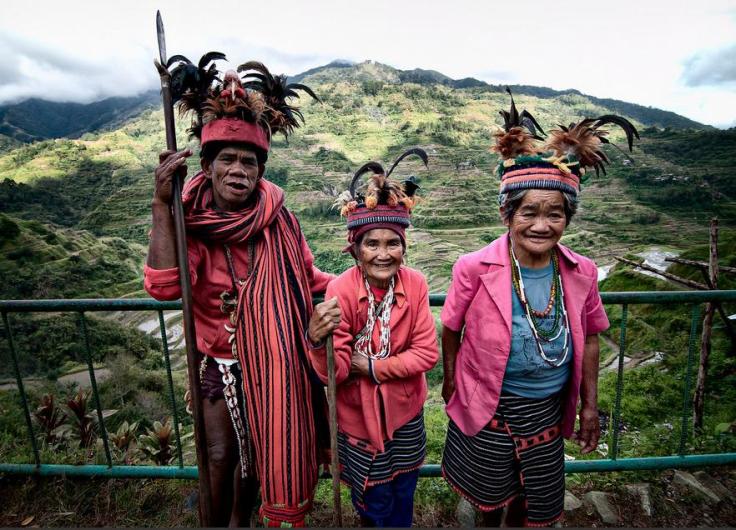
Igorots are people of the mountains. They have their own way of living, culture, languages, and traditions different from people living in the low lands. Coming from a province relatively near the mountains, I barely know anything about them. The idea of learning more about who they really are excites me and that with this I could be able to understand not just the facade and clichés about them but their true identity as people.
According to Encyclopaedia Britannica, Igorots are any ethnic groups in the mountains of Northern Luzon that have kept their way of life up until recently. This way of living was hardly interfered by any exterior elements like modernization and western culture. They were also able to resist colonization from both the Spaniards and Americans.
But who really are the Igorots? Are they only defined by where they live? I don’t think so. I think to know them better; we have to look into different aspects that make up the Igorot people.
Where did they come from?
Early Igorots are Austronesians that migrated to the Northern part of Luzon where they inter-mingled with the Astral-Melanesian population that had inhabited the islands 23,000 years earlier. As some of these Austronesians migrated to the southern parts of the island, the Early Igorots then settled in the mountainous region of the Cordillera where they are able to establish their way of life that we know today.
The Five Ethno-Linguistic Groups
The Igorots can be subdivided into different groups that are scattered all over the Cordilleras; each has its own dialect and culture. We have to remember though that even though there are subgroups, they all make up the Igorots as a whole.
- Bontoc Tribe – They live in the central Mountain Province who speaks Bontoc language.
- Kalinga Tribe – They live in Kalinga and speaks Kalinga and Limos language.
- Isneg – They are also called Apayao, Isnag, or Dibagat-Kabugao-Itneg and can be found in the Northern Apayao.
- Kankana-ey – Also known as Sagada/Besao Igorot located in the Western Mountain Province and speaks the Kankana-ey laguage.
- Ibaloi – They are from the southern Benguet and are also known as Ibaloy or Nabaloi.
Faith and Rituals
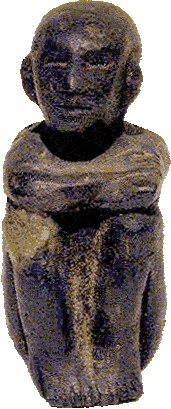
For centuries, Igorots were able to evade the religious conquest of the Spanish colonization and was able to preserve their own beliefs and rituals. At present, due to the exposure of the Igorots to certain faiths and given the right to choose their own religion, there are Igorots who are able to embrace other religions like Christianity and Islam.
Traditionally some Igorots believed in deities like “Lumawig” who personifies nature and spirits of the dead called “Anitos”. They have also have categories of God that includes:
- Dios Adi Kaila – the creator
- Kabunyan – the one who executes the creator’s plans
- Anitos – ancestral spirits
The Igorots also has rituals usually performed by the Tribal Leader (also called Manbunong) who not just perform social functions but also spiritual and religious rites. These rituals are as follows:
- Cañao – offered for religious celebration, funerals, and to secure healing
- Begnas – offered for bountiful harvest; usually they offer killed animals for their “Anitos” and distribute the meat to the whole village
- Senga for Be-ey – House blessing
- Senga for Newly wed couples – they offer animals like chicken, pig, cow, or carabao that they distribute to their relatives who attended and even those who did not.
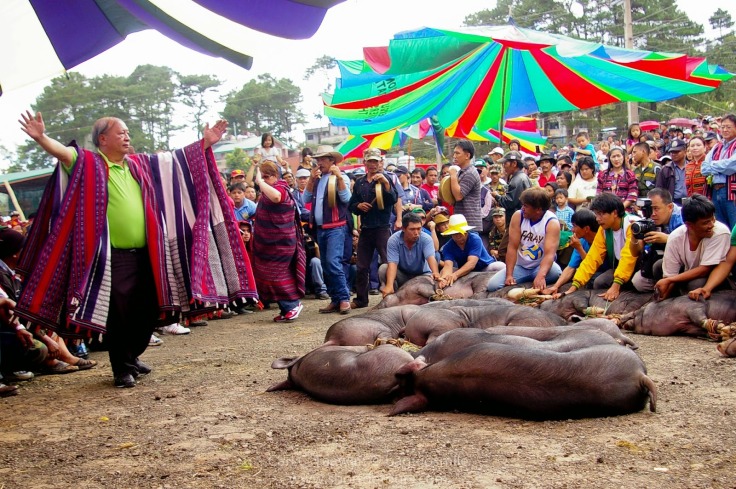
Igorots tend to attribute disasters and calamities to the favour or disfavour of the Anitos’. If there is any occurrence of misfortune that happens in the village, they sacrifice an animal wherein the Manbunong will observe the bile for signs and omens. If the Manbunong reads any bad omen with the bile of the sacrificed animal, he will ask for another one until the desired bile is obtained.

Dances are also part of the Cañao wherein the movements and positions are circular and rhythmic acting out certain animals as well as aspects of a hunt. During the dance, they are also in traditional garbs woven in indigenous patterns or designs.
Livelihood
The Igorots are good farmers who have traditionally cultivated the sides of the mountains for planting rice and vegetables. They also breed animals like chickens, pigs, and cow’s that they use for food source as well as for rituals. They are also weavers, artists, and craftsmen that until now are well known for their impeccable handworks.
Headhunting and Tattoos
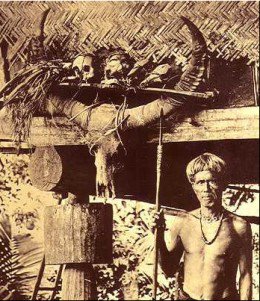
In the earlier days, Igorots were known as headhunters who during warfare decapitate the heads of their rival tribes and put them in front of their houses. This barbaric practice was subdued during the Spanish Colonization and outlawed during the American occupation.
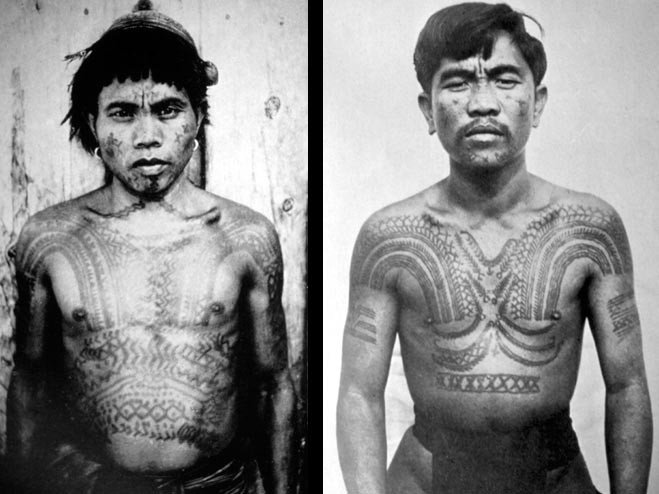
Tattoos was also a big part during tribal wars for tattoos represented how brave and how good of a warrior they are. The number of tattoos a person has is proportionate to how many people they have killed or beheaded. Some tattoos are also for protection, spirituality, and rank.
There is too much to learn about the Igorot people and what I know about them is just a scratch of the surface of who they really are as people. It will take years for me to fully understand them but I think this is a good start.
Sources:
Balisong, M. (2005, March 8). The Gods of the Igorots. Retrieved February 25, 2017, from http://theocultura.blogspot.com/2005/03/gods-of-igorots.html
Igorot People of Cordillera Region. (2011, July 28). Retrieved February 25, 2017, from http://noypicollections.blogspot.com/2011/07/igorot-people-of-cordillera-region.html
Krutak, L. (2006). Return of the Headhunters: The Philippine Tattoo Revival by Lars Krutak. Retrieved February 25, 2017, from http://www.vanishingtattoo.com/tattoos_in_Philippines.htm
M. (2003, January 26). The IGOROT People – Bontoc, Ibaloi, Isneg (or Apayao), Kalinga, and Kankanaey. Retrieved February 25, 2017, from http://mandirigma.org/?p=1312
The Editors of Encyclopædia Britannica. (2015, March 26). Igorot. Retrieved February 25, 2017, from https://www.britannica.com/topic/Igorot
The Austronesian People. (n.d.). Retrieved February 25, 2017, from http://www.ourpacificocean.com/austronesian_people/
W. (2013, June 10). Cañao: Glancing Into an Ancient Filipino Tradition. Retrieved February 25, 2017, from http://www.icbe.eu/articles/216-canao-glancing-into-an-ancient-filipino-tradition
Image Sources:
https://baliktanaw.wordpress.com/2008/09/23/igorots-perform-ifugao-dance-philippines-1911/
http://class.csueastbay.edu/anthropologymuseum/virtmus/Philippines/Crafts/Ifugao_Bulols.htm
http://hubpages.com/literature/headhunters-of-the-cordilleras
http://www.jacobimages.com/2013/05/igorots-cordilleras
http://www.larskrutak.com/return-of-the-headhunters-the-philippine-tattoo-revival/
http://noypicollections.blogspot.com/2011/07/igorot-people-of-cordillera-region.html
https://www.roughguides.com/article/banaue-rice-terraces/
http://www.shortdetours.com/2014/11/the-grand-canao-of-benguet.html



Leave a comment